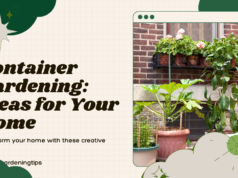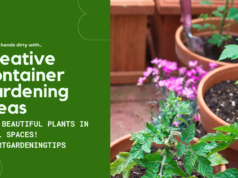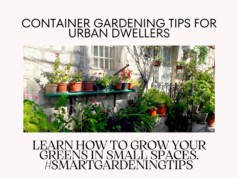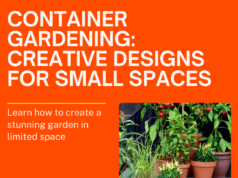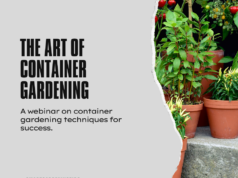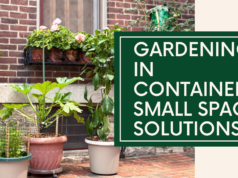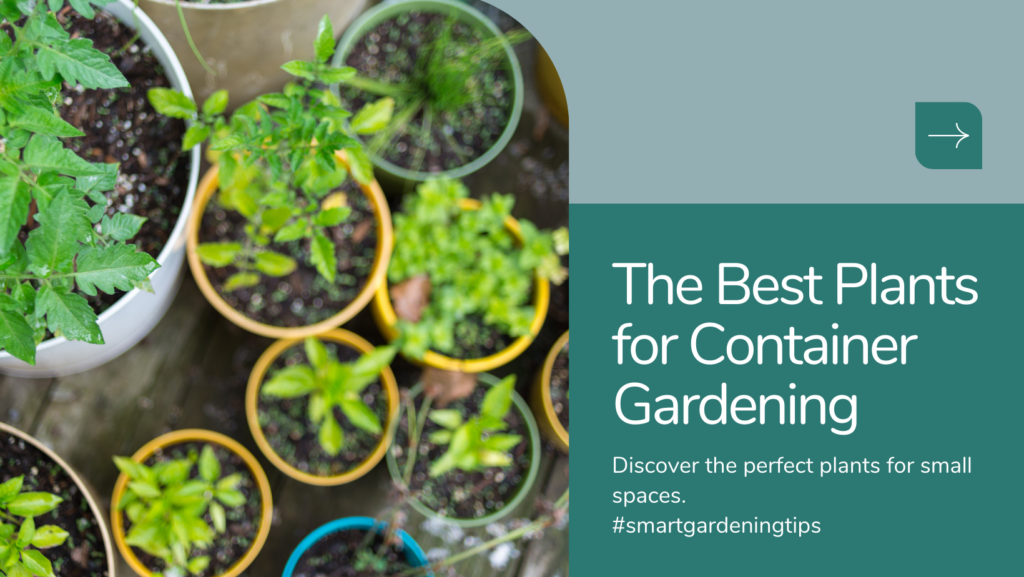
In this section, we will explore the best plants for container gardening. Whether you have a small balcony or limited outdoor space, container gardening allows you to create a stunning and versatile garden oasis. We will cover a variety of plants including herbs, flowers, vegetables, succulents, and fruits that are well-suited for growing in containers.
Key Takeaways:
- Container gardening is a great option for small spaces.
- You can grow a variety of plants, including herbs, flowers, vegetables, succulents, and fruits in containers.
- Container gardening allows for easy mobility and reduces pest problems.
- By following the tips and techniques provided, you can create a diverse and thriving container garden.
- Start planning your container gardening adventure today and enjoy the beauty and benefits it brings to your life.
Herbs for Container Gardening
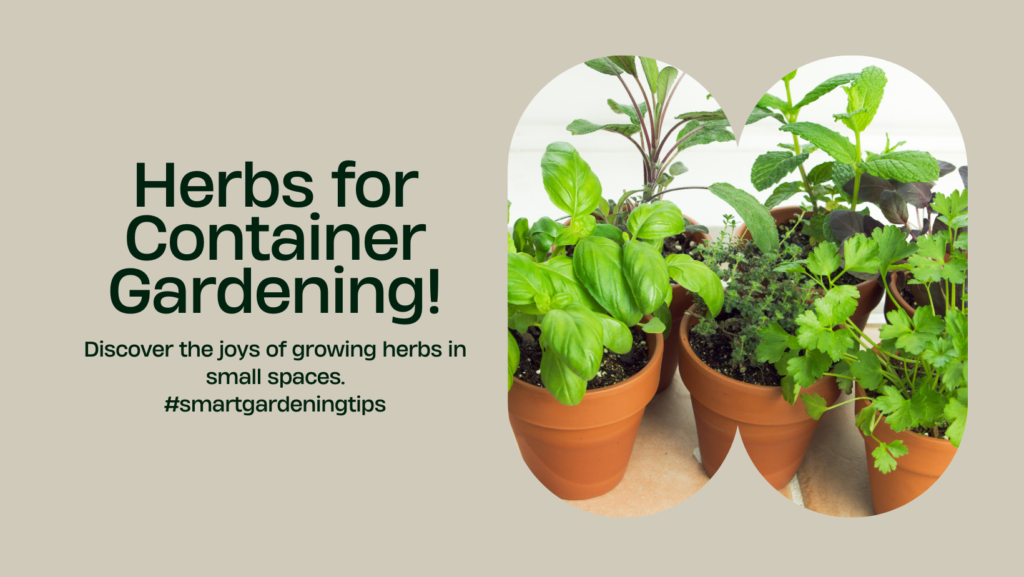
When it comes to container gardening, herbs are a popular and practical choice. Their compact size and culinary usefulness make them ideal for growing in containers. Whether you have a small balcony, limited outdoor space, or simply want to add some greenery to your home, herbs are a versatile option to consider.
Popular Herbs for Container Gardening
There are several herbs that thrive in containers and are well-known for their flavor and fragrance. Here are some popular options to consider:
- Basil: This aromatic herb is a staple in many kitchens, and its vibrant leaves bring a burst of freshness to any dish.
- Rosemary: With its woody aroma and needle-like leaves, rosemary adds depth and flavor to a wide range of dishes, from roasted vegetables to grilled meats.
- Mint: Known for its refreshing taste, mint is perfect for adding a burst of flavor to beverages, desserts, and even savory dishes like tabbouleh or spring rolls.
Tips for Growing Herbs in Containers
While herbs are relatively easy to grow in containers, there are a few key tips to keep in mind:
- Soil Requirements: Use a well-draining potting mix specifically formulated for container gardening. Herbs prefer soil that isn’t overly compact or prone to waterlogging.
- Watering Tips: Herbs generally don’t like to sit in waterlogged soil, so it’s best to water them when the top inch of soil feels dry to the touch. Avoid overwatering, as it can lead to root rot.
- Sunlight Needs: Most herbs thrive in full sun, so make sure to place your containers in a location that receives at least six hours of direct sunlight per day.
Pro tip: Remember to harvest your herbs regularly to encourage growth and promote bushier, healthier plants. Pinching off the tips will also help prevent them from flowering and going to seed too soon.
Container gardening provides a convenient and accessible way to enjoy the benefits of fresh herbs right at your fingertips. Whether you grow them for their culinary uses or simply enjoy the beauty and scent they bring to your space, herbs are a fantastic addition to any container garden.
Flowers for Container Gardening
Adding flowers to your container garden can bring color and beauty to any space. Whether you have a small balcony or a spacious patio, container gardening allows you to create a vibrant floral display that enhances your outdoor environment. To help you create the perfect container garden, we have compiled a list of the best flowering plants for containers.
Carefully Selected Flowering Plants
When selecting flowering plants for your containers, consider factors such as the size of your containers, the amount of sunlight your space receives, and your personal preferences for colors and fragrance. Some popular options for container gardening are:
- Petunias: These vibrant and versatile annual flowers are available in numerous colors and patterns. Petunias thrive in well-draining soil and require regular watering.
- Geraniums: Known for their vibrant blooms and attractive foliage, geraniums are a classic choice for container gardening. They prefer full sun and well-draining soil.
- Marigolds: With their cheerful golden-yellow or orange blooms, marigolds add a pop of color to any container garden. They are easy to grow and also help repel pests.
These flowering plants are just a few examples of the wide variety of options available for container gardening. Feel free to experiment with different combinations and species to create a unique and stunning floral display.
Care and Maintenance Tips
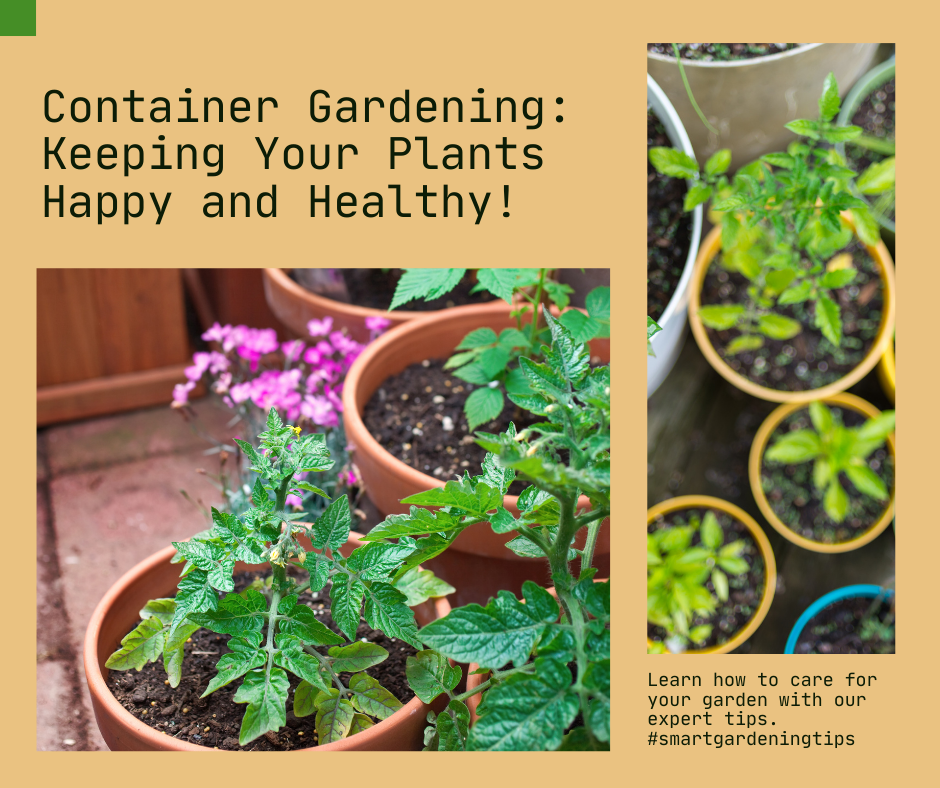
Proper care and maintenance are essential for ensuring the health and longevity of your flowering plants in containers. Here are some tips to help you keep them thriving:
- Watering: Regularly check the moisture level of the soil and water your plants when the top inch feels dry. Avoid overwatering to prevent root rot.
- Fertilizing: Feed your flowering plants with a balanced liquid fertilizer every few weeks during the growing season to promote healthy growth and abundant blooms.
- Deadheading: Remove spent flowers to encourage continuous blooming and prevent the plants from diverting energy to seed production.
- Pruning: Trim back leggy or damaged stems to maintain a compact and attractive shape. Pruning also helps improve air circulation and reduce the risk of disease.
- Pest Control: Monitor your plants regularly for signs of pests, such as aphids or snails. If necessary, use organic pest control methods or insecticidal soap to keep pests at bay.
By following these care and maintenance tips, you can ensure that your flowering plants in containers continue to thrive, providing you with a beautiful and captivating display throughout the growing season.
Comparison of Flowering Plants for Containers
| Flowering Plant | Light Requirement | Watering Needs | Blooming Season |
|---|---|---|---|
| Petunias | Full sun to part shade | Regular watering | Spring to fall |
| Geraniums | Full sun to part shade | Moderate watering | Spring to fall |
| Marigolds | Full sun | Moderate watering | Spring to fall |
“Container gardening allows you to create a stunning and versatile garden oasis, even in limited outdoor spaces.”
With the right selection of flowering plants and proper care, you can create a breathtaking container garden that brings joy and beauty to your surroundings. Whether you prefer vibrant petunias, classic geraniums, or cheerful marigolds, the options for flowers in containers are endless. Don’t be afraid to experiment and let your creativity flourish as you design a unique floral display. Happy gardening!
Vegetables for Container Gardening
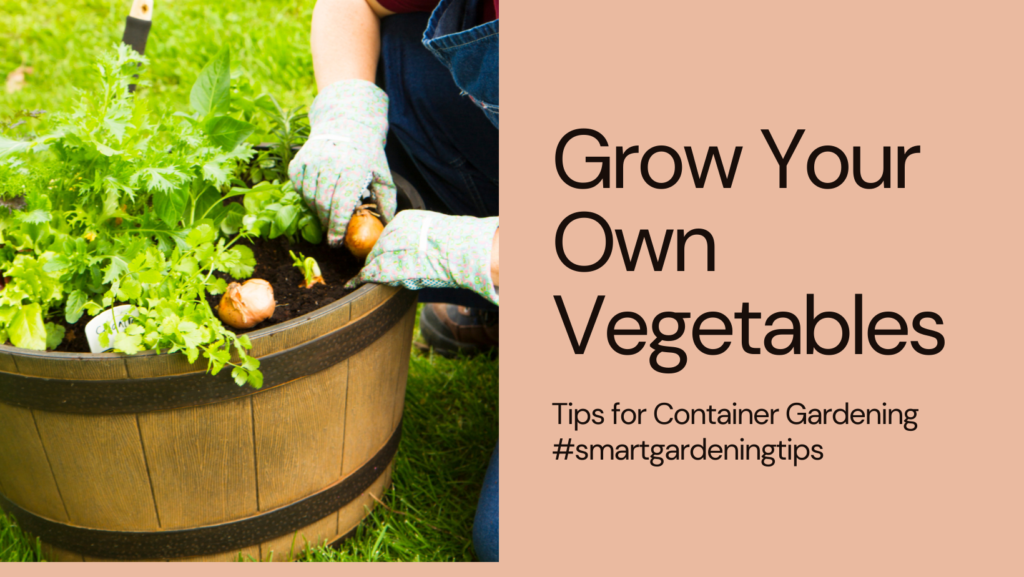
Growing vegetables in containers is a fantastic way to cultivate your own fresh produce, even if you have limited space. With the right choice of vegetables and some container gardening tips, you can create a thriving vegetable garden right on your balcony or patio.
When it comes to vegetables suited for container gardening, there are a variety of options to choose from. Here are some of the top vegetables that thrive in containers:
- Tomatoes: Whether you prefer cherry tomatoes or large beefsteak tomatoes, they are one of the most popular vegetables for container gardening. They are prolific producers and can be grown in pots or hanging baskets.
- Peppers: Bell peppers, jalapeños, and other varieties of peppers can thrive in containers. They require a sunny location and well-drained soil to produce flavorful and colorful peppers.
- Lettuce: Leafy greens like lettuce are well-suited for container gardening. They have shallow roots and can be grown in small pots or even window boxes.
Now that you know some of the top vegetables for container gardening, let’s explore some container gardening tips for successfully growing vegetables:
- Choose the right container size: Make sure your containers are large enough to accommodate the root system of your chosen vegetables. This will ensure proper growth and development.
- Provide adequate drainage: Proper drainage is essential for container plants. Ensure your containers have drainage holes at the bottom to prevent waterlogging and root rot.
- Use quality potting soil: Invest in a high-quality potting mix that is well-draining and nutrient-rich. This will provide the necessary nutrients and support for your vegetable plants.
- Water regularly and consistently: Keep an eye on the moisture levels of the soil and water your vegetables regularly. Container plants tend to dry out faster, so you may need to water them more frequently.
- Fertilize appropriately: Container-grown vegetables require regular fertilization to promote healthy growth. Choose a slow-release or organic fertilizer and follow the recommended application guidelines.
By following these container gardening tips and choosing the right vegetables, you can enjoy a bountiful harvest of fresh and delicious produce, right at your fingertips.
| Vegetable | Container Size | Light Requirements | Watering Needs | Fertilization |
|---|---|---|---|---|
| Tomatoes | 5-gallon pot or larger | Full sun (6-8 hours) | Regular watering | Fertilize every 2-4 weeks |
| Peppers | 3-gallon pot or larger | Full sun (6-8 hours) | Regular watering | Fertilize every 4-6 weeks |
| Lettuce | 6-inch deep container | Partial shade (4-6 hours) | Consistent moisture | Fertilize every 4 weeks |
With a little care and attention, you can grow an abundant vegetable garden in containers and savor the satisfaction of harvesting your own homegrown produce.
Succulents for Container Gardening
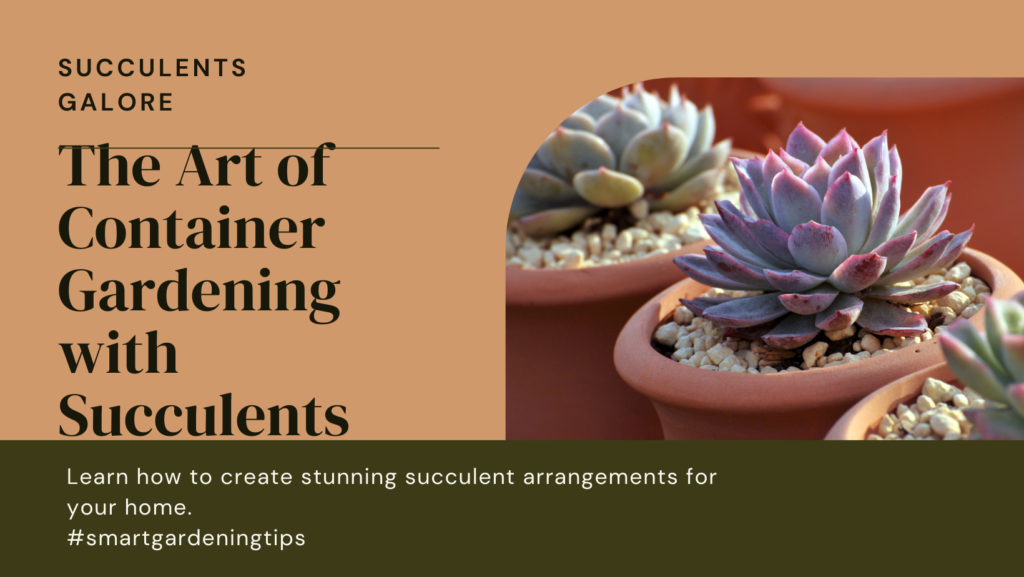
Succulents are the perfect choice for container gardening. These low-maintenance plants not only add beauty to your space but also thrive in the limited confines of a container. Whether you have a small balcony or a sunny window sill, succulents can transform any space into a lush and vibrant oasis. In this section, we will explore the best succulents for container planting and provide valuable insights into their watering and sunlight requirements to ensure their health and longevity.
There are several popular succulents that are ideal for container gardening. Aloe vera, known for its medicinal properties, is a versatile succulent that requires minimal care and can withstand long periods without water. Echeveria, with its rosette-shaped leaves and stunning color variations, makes a beautiful addition to any container garden. Jade plants, also known as Crassula ovata, are hardy and adaptable, making them a great choice for beginners.
When it comes to watering succulents in containers, it’s important to strike the right balance. Succulents store water in their leaves, stems, or roots, allowing them to survive in arid conditions. However, overwatering can lead to root rot and other issues. To ensure your succulents thrive, water them thoroughly and then allow the soil to dry out before watering again. Remember, it’s better to underwater than to overwater succulents.
Succulents also have specific sunlight requirements. Most succulents thrive in bright, indirect light, although some varieties can tolerate full sun or shade. It’s important to observe how your succulents respond to the amount of sunlight they receive and adjust their placement accordingly. If you notice stretchy or pale growth, it may be a sign that your succulents need more light. On the other hand, if you see signs of sunburn or discoloration, they may be receiving too much direct sunlight.
To illustrate the beauty of succulents in container gardening, take a look at the image below:
Whether you’re a beginner or an experienced gardener, succulents offer a world of possibilities for your container garden. Their unique shapes, colors, and textures can create visually stunning displays, while their low-maintenance nature makes them a perfect choice for busy individuals. By choosing the right succulents and providing them with the proper watering and sunlight, you can enjoy a thriving container garden filled with these beautiful and resilient plants.
Fruits for Container Gardening
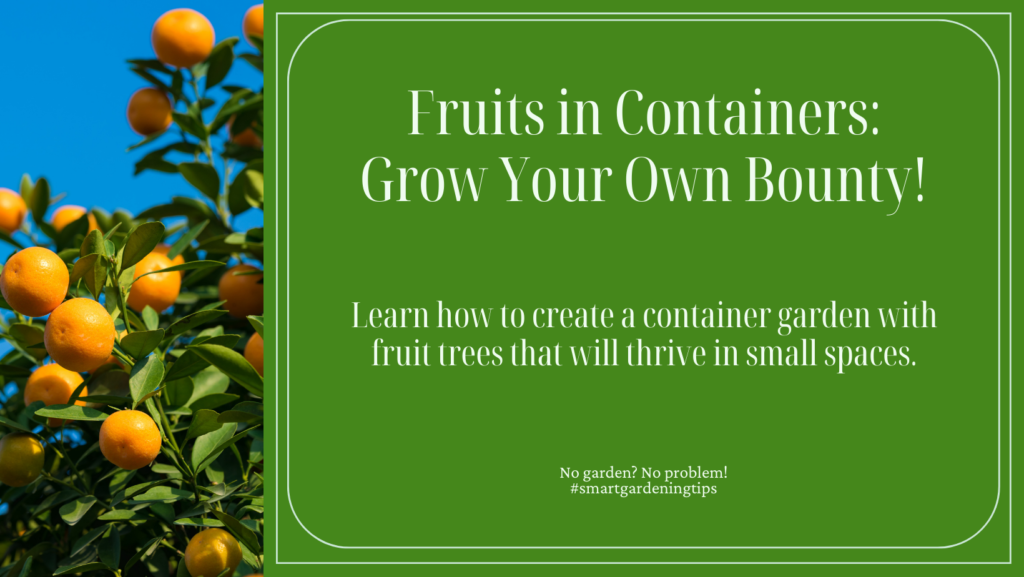
Growing fruits in containers is a fantastic way to add freshness and flavor to your urban garden or limited outdoor space. Whether you have a balcony, patio, or small backyard, container gardening allows you to cultivate a variety of fruit-bearing plants that thrive in confined spaces.
When it comes to fruits for container gardening, there are several options that are well-suited for this unique growing environment. Some of the most popular choices include:
- Strawberries: These sweet and juicy berries are ideal for containers, as they have a shallow root system and can be grown in hanging baskets or vertical planters.
- Blueberries: Compact and high-yielding, blueberry varieties such as ‘Top Hat’ and ‘Sunshine Blue’ are perfect for containers.
- Dwarf Citrus Trees: Varieties like Meyer lemon, Key lime, and Calamondin orange can be pruned and trained to remain small, making them excellent choices for container cultivation.
When it comes to proper care and maintenance of fruit plants in containers, pruning and fertilizing techniques play a crucial role in optimizing fruit production. Regular pruning helps control the plant’s size, shape, and encourages healthy growth. Fertilizing fruit plants with a balanced fertilizer specifically formulated for container gardening provides them with the necessary nutrients for abundant fruit development.
Remember to:
- Provide adequate sunlight: Place your fruit plants in a location that receives at least six to eight hours of direct sunlight daily.
- Choose the right containers: Opt for containers that are large enough to accommodate the plant’s root system and provide good drainage.
- Water consistently: Ensure that your fruit plants receive regular watering, keeping the soil moist but not waterlogged.
- Implement proper pruning techniques: Regularly prune your fruit plants to remove dead or diseased branches and promote air circulation.
- Fertilize as recommended: Use a balanced fertilizer designed for fruit plants in containers and follow the application instructions.
With the right selection of fruit plants and proper care, you can enjoy a bountiful harvest of homegrown fruits right at your doorstep. Container gardening opens up endless possibilities for growing your favorite fruits in small spaces, allowing you to experience the joys of fresh flavors and the satisfaction of nurturing your own edible garden.
Get started today and embark on a fruitful container gardening journey!
Benefits of Container Gardening with Plants
Container gardening offers numerous benefits beyond limited space availability. By growing plants in containers, you can create a diverse and thriving garden that enhances any area. Let’s explore the advantages of container gardening with plants and discover how it can transform your gardening experience.
1. Diverse Garden with Different Plant Species
Container gardening allows you to bring together a variety of plant species in one area, creating a truly diverse garden. You can mix and match plants with different colors, textures, and growth habits, resulting in a visually appealing and dynamic landscape. Whether you prefer a vibrant mix of flowers, a selection of herbs for culinary delight, or a combination of vegetables, the possibilities for creating a unique container garden are endless.
2. Easy Mobility
One significant advantage of container gardening is the mobility it offers. Containers can be easily moved around your outdoor space, allowing you to rearrange and redesign your garden whenever you desire. This flexibility is particularly useful if you live in a rental property or have limited gardening space. You can experiment with different arrangements, follow the sun’s path, or adapt to changing weather conditions, ensuring optimal growth for your plants.
3. Reduced Pest Problems
When plants are grown in containers, it becomes easier to control and prevent pest problems. By keeping your plants off the ground, you can minimize the risk of soil-borne pests and diseases. Additionally, you can regularly inspect your plants for any signs of infestation and take immediate action. Applying organic pest repellents and practicing good sanitation practices also becomes more manageable in a contained environment, helping to keep your plants healthy and pest-free.
4. Suiting Plant-Specific Environments
Container gardening allows you to create micro-environments that suit the specific needs of your plants. You can choose containers with different sizes, materials, and drainage capabilities to provide optimal conditions for each plant. For instance, drought-tolerant plants can be planted in containers with excellent drainage, while moisture-loving plants can thrive in containers that retain more water. By tailoring the growing environment, you can maximize the growth, health, and productivity of your plants.
Summary of Benefits
| Benefits | Description |
|---|---|
| Diverse garden | Bring together different plant species for a visually appealing garden. |
| Easy mobility | Rearrange and redesign your garden without constraints. |
| Reduced pest problems | Control and prevent pests more effectively in a contained environment. |
| Suiting plant-specific environments | Create optimal growing conditions for each plant. |
Creating a Diverse and Thriving Container Garden
In this section, we will provide you with practical tips and techniques for creating a diverse and thriving container garden. Whether you have a small balcony or limited outdoor space, container gardening offers endless possibilities for bringing nature into your surroundings. By carefully selecting containers, soil mix, and plant arrangement, you can create a visually appealing and healthy container garden that flourishes throughout the seasons.
Selecting the Right Containers
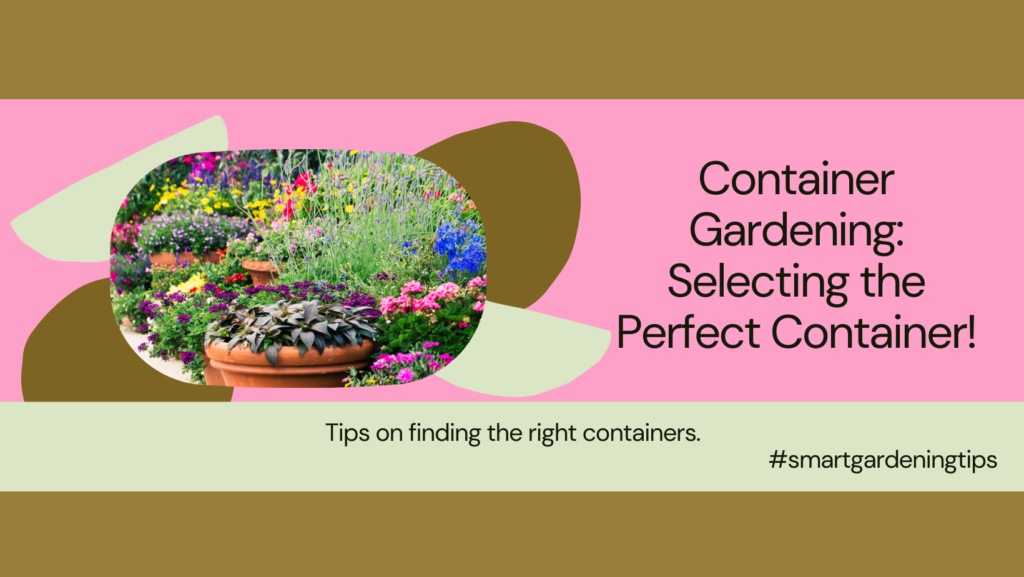
When choosing containers for your container garden, consider both functionality and aesthetics. Opt for containers that have good drainage to prevent waterlogging, ensuring the health of your plants. You can select a variety of container materials, such as ceramic, terracotta, or plastic, based on your preferences and the overall style of your space. Additionally, consider the size of the containers and ensure they are suitable for the plants you wish to grow.
Choosing the Appropriate Soil Mix
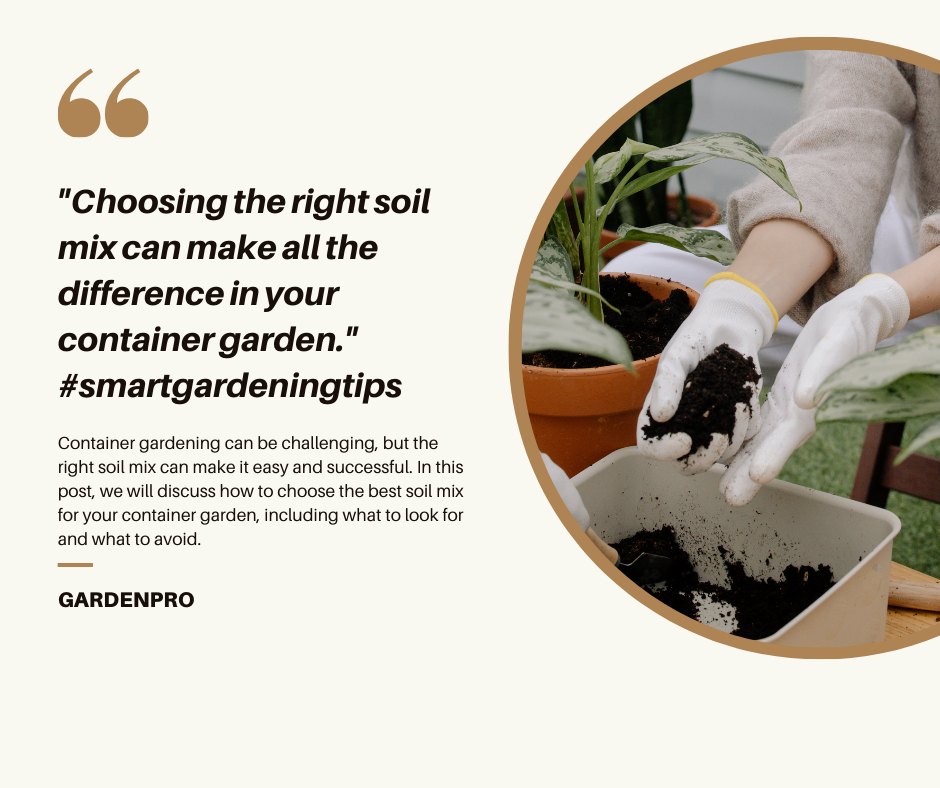
The success of your container garden largely depends on the soil mix you use. Select potting soil specifically formulated for container gardening, as it provides the necessary nutrients and drainage for your plants. A high-quality potting mix will ensure that water is retained while allowing excess moisture to drain away. It’s also essential to periodically replenish the nutrients in the soil to support the growth of your plants.
Arranging Plants for Visual Appeal
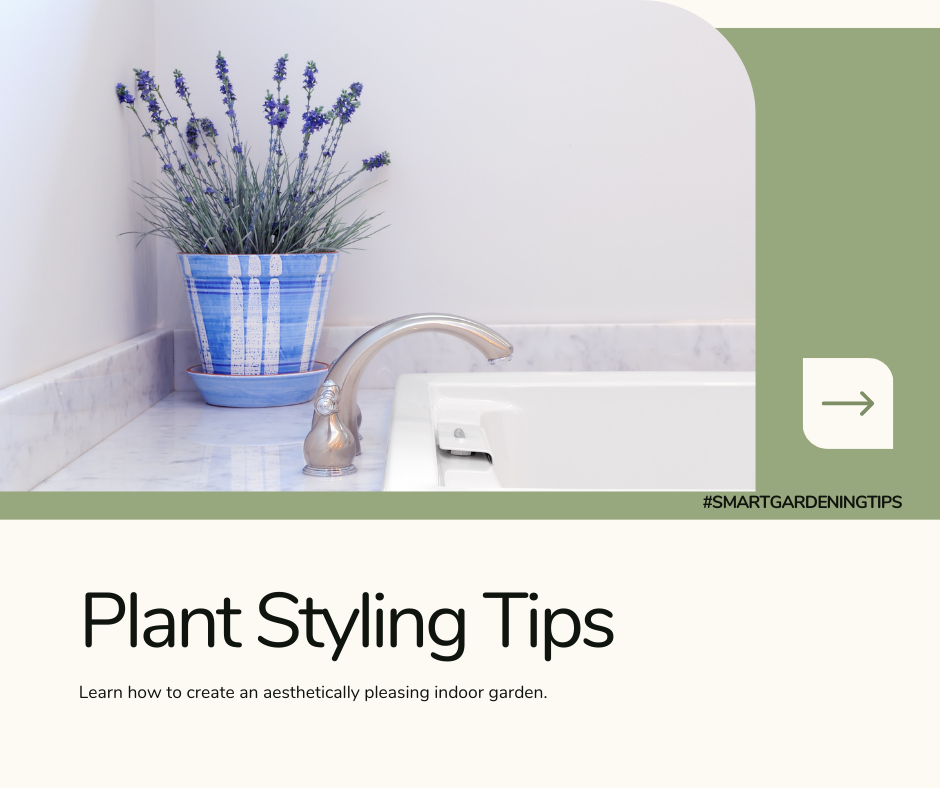
Creating an aesthetically pleasing container garden involves thoughtful arrangement of plants. Consider the height, color, and texture of the plants when designing your container garden. Place taller plants in the center or towards the back of the container, and cascading or trailing plants around the edges to create a sense of depth and visual interest. Mixing different plant varieties and using contrasting colors can create a stunning display.
Maintaining the Health and Beauty of Your Container Garden
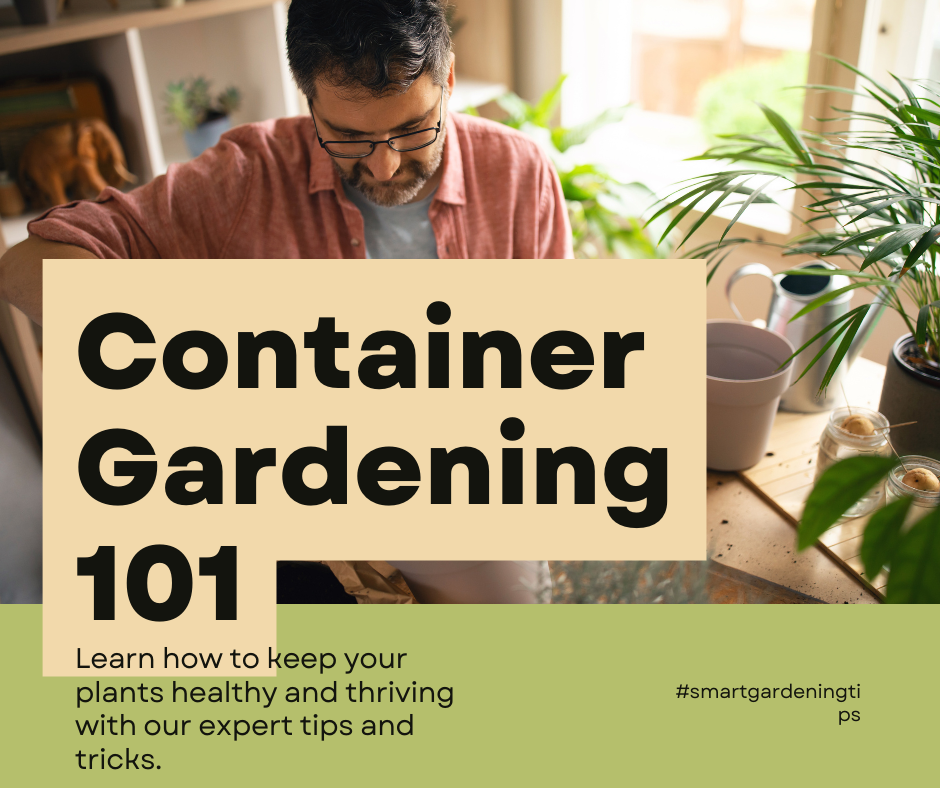
Regular maintenance is crucial for the longevity and beauty of your container garden. Ensure that your plants receive the appropriate amount of sunlight according to their specific needs. Monitor the moisture levels in the soil and water your plants accordingly, avoiding overwatering or underwatering. Additionally, regularly inspect your plants for pests and diseases, and take necessary measures to prevent infestations or treat existing issues.
By following these tips and techniques, you can create a diverse and thriving container garden that brings joy and beauty to your surroundings. Enjoy the process of selecting plants, arranging them in containers, and watching them grow and bloom. A container garden is not only a delightful hobby but also an opportunity to connect with nature and create your own green oasis.
FAQ
Q. What are the best plants for container gardening?
A. The best plants for container gardening include herbs, flowers, vegetables, succulents, and fruits. These options allow you to create a diverse and vibrant garden in limited spaces.
Q. What are popular herbs for container gardening?
A. Some popular herbs for container gardening are basil, rosemary, and mint. These herbs are compact in size and can be easily grown in containers.
Q. What are some tips for growing herbs in containers?
A. When growing herbs in containers, it is important to use well-draining soil, water consistently, and provide adequate sunlight. Additionally, regular pruning and harvesting will help promote healthy growth.
Q. Which flowers are suitable for container gardening?
A. Flowers such as petunias, geraniums, and marigolds are well-suited for container gardening. These flowering plants add color and beauty to any space.
Q. How do I care for flowering plants in containers?
A. To care for flowering plants in containers, ensure they have enough sunlight, water according to their specific needs, and fertilize regularly. Additionally, removing spent flowers and preventing pest infestations are essential for their maintenance.
Q. What are the top vegetables for container gardening?
A. In container gardening, vegetables like tomatoes, peppers, and lettuce are ideal choices. These vegetables thrive in containers and provide delicious homegrown produce.
Q. What are some container gardening tips for growing vegetables?
A. When growing vegetables in containers, ensure the containers are large enough for root development, provide adequate drainage, and fertilize regularly. Additionally, proper spacing and pest control are crucial for successful vegetable gardening.
Q. Which succulents are well-suited for container planting?
A. Succulents like aloe vera, Echeveria, and jade plants are ideal for container planting. They are low-maintenance and require minimal watering.
Q. What are the watering and sunlight requirements for succulents in containers?
A. Succulents in containers require infrequent watering while ensuring the soil is completely dry between waterings. They thrive in bright sunlight, so be sure to place them in a sunny spot.
Q. What fruit-bearing plants can be grown in containers?
A. Fruit plants such as strawberries, blueberries, and dwarf citrus trees are suitable for container gardening. These plants produce delicious fruits in limited spaces.
Q. How do I prune and fertilize fruit plants in containers?
A. Pruning fruit plants in containers helps maintain their shape, control size, and promote better fruit production. Fertilizing with a balanced fertilizer according to the specific plant’s requirements is crucial for optimal growth and fruiting.
Q. What are the benefits of container gardening with plants?
A. Container gardening with plants offers benefits such as easy mobility, reduced pest problems, and the ability to create a diverse garden in limited space. It allows you to grow different plants in environments that suit their specific needs.
Q. How can I create a diverse and thriving container garden?
A. To create a diverse and thriving container garden, select the right containers, use quality soil, arrange plants for visual appeal, and provide proper maintenance such as watering, fertilizing, and pruning. Regularly monitoring plant health and adjusting care as needed is also essential.
Conclusion
In conclusion, container gardening offers a wonderful opportunity to create a lush and thriving garden even in the smallest spaces. With the right selection of plants – including herbs, flowers, vegetables, succulents, and fruits – you can design a personalized garden oasis that suits your taste and preferences.
By following the tips and techniques provided in this article, you can experience the joy and satisfaction of nurturing a thriving container garden. Whether you have a small balcony, limited outdoor space, or even an indoor area with ample sunlight, container gardening allows you to bring nature closer to you.
Start planning your container gardening adventure today and enjoy the beauty and benefits it brings to your life. With a bit of creativity, dedication, and care, you can transform your space into a vibrant and green haven, filled with life and natural beauty.


